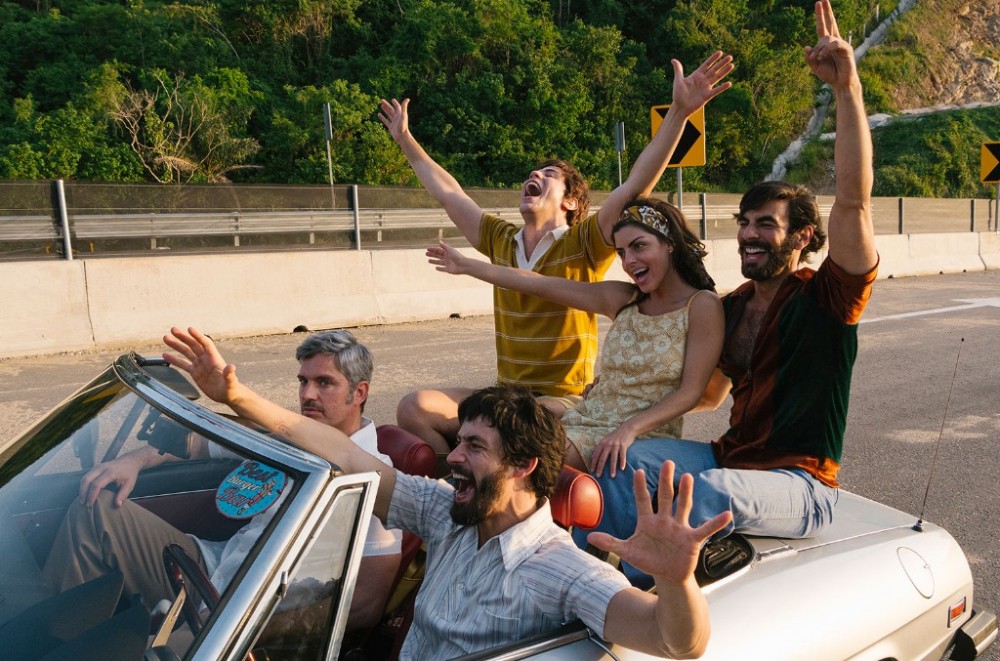Mexican director Manolo Caro released the final season of La Casa de las Flores, leaving behind memorable characters like the ever-so secretive mother-daughter duo Virginia (Verónica Castro) and Paulina de la Mora (Cecilia Suárez), and an equally memorable soundtrack under Lynn Fainchtein’s supervision.
An already musically-driven series, with breakout performances by drag queens at the de la Mora’s family-owned cabaret sprinkled throughout the episodes. The well-sourced soundtrack features a mix of classics like Yuri’s “La Maldita Primavera,” Alaska’s “A Quién Le Importa” and Gloria Trevi‘s “El Recuento de los Daños,” plus new songs like Marcela Viejo’s “Órdenes Para Mi,” Esteman’s “Burkina Faso” and Amandititita‘s “No Me Hallo” throughout the first two seasons.
The final season, which takes viewers 40 years back to chronicle Virginia’s coming of age, calls for a new order of songs that capture the zeitgeist of the 1970s in Mexico and we hear songs like “Yes Sir, I Can Boogie” by Baccara, Jeanette’s “Soy Rebelde” and “Lo Que te Queda” by Yaco Monti.
In a Q&A with Billboard, Fainchtein reflects on La Casa de las Flores‘ soundtrack and the challenges of sourcing Spanish music from the 70s.
What drew you to a project like La Casa de las Flores?
First of all, for me it’s the story and then the team because the work we do in film and television is not writing a book, it’s not painting, it’s not even making music, which are activities you can do by yourself. In my field, it is always about team work so for me it’s very important to know who I’m going to work for a year or two years or three years. I’ve been working with Manolo since his first film and I like his sense of humor.
I really liked the way he challenges the typical telenovela in Latin America known for its racist storylines and violence against women that have been ingrained in our culture. What Manolo does with La Casa de las Flores is that he creates something that changes, relaxes and modifies that old storyline. He breaks every stereotype that we’ve come to known because of telenovelas. Those old storylines simply don’t align with the times.
What were those conversations like with Manolo in terms of the role music would play in each season?
Manolo is very open to suggestions and so my job really becomes interesting. In the case of the third season, Manolo goes back to the 70s so we found incredible songs but it was a hassle to clear them specifically because those songs in Spanish from the 70s aren’t always cleared or well registered. It was a nightmare because we had songs that we liked and went well with the scene but were hard to clear. So, we try to be innovative with new music that we include in the first and second season and we keep the same thing in third season but adding music from the 70s, and we found a good balance in the music with really good songs. We found some really nice songs that can carry out a scene.
Also, what I like about Manolo is that he’s not only open to new music but also to new artists. There’s always space on his scripts to play new music. And, Manolo is very savvy director on the music side but he is an old soul. Even tho I am older than him, I need to show him new music because it seems like. He’s an old soul. Even for music.
Did supervising music for the film Roma, set in the early 1970s, help with sourcing for La Casa de las Flores’ third season?
I already had a lot of research from Roma and previous years. Also, my hard drive is full of playlists and the 70s is a very nice era in Spanish music cause it’s not not like the pop that we came to know in the 80s. It’s a different pop and I like digging for those songs.
What do you takeaway from this experience?
La Casa de las Flores is just another amazing project that I’ve been able to work with under Netflix. I’ve now been working with Netflix for like four years and I’m enjoying the ride because they’re doing a lot of content around the world internationally that is very interesting.
The Spanish-language series’ final season is now streaming on Netflix.



